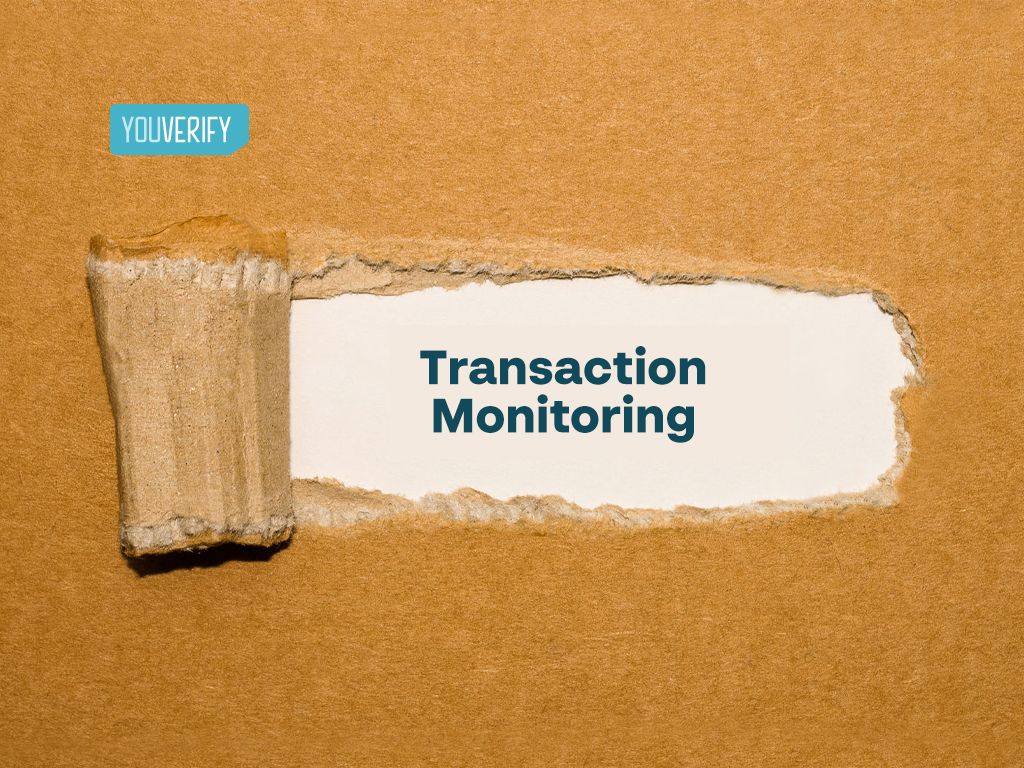Transaction monitoring is the process of monitoring customer transactions such as their transfers, deposit, and withdrawals to obtain a complete picture of the customer activity. Transaction monitoring also includes accessing previous and current customer interactions and information to identify suspicious behaviour that could indicate money laundering or the existence of other financial crimes.
Most financial institutions today leverage software and AI technology to automatically analyse the available data. Based on the set criteria, the monitoring system flags certain transactions as suspicious, which are then investigated to prove the alert true or false. If true, the transaction should be filed as a Suspicious Transaction Report (STR), therefore, alerting the appropriate regulation and law enforcement agencies. These bodies take action in case it's a money laundering or terrorist financing activity.
Constant or ongoing transaction monitoring is an important compliance requirement for several business sectors as stipulated by the global money laundering regulations.
What is the Transaction Monitoring Process?
This refers to the process of monitoring a customer’s transaction including deposits, withdrawals and transfers. There are several ways in which a business can go about the transaction monitoring process.

However, before a structure is established, the business needs to consider several factors based on its uniqueness and industry, which include:
- Corporate culture
- Relevant and associated operational risks
- Geographic location
- Industry/ Sector
- Size and complexity of its reach
- Customer profiles
- Frequently related business profiles
After considering the business end and its interest, another aspect to look to are the requirements set by regulators. Although global regulators do have cast-in-stone guidelines for a transaction monitoring process, there are two major approaches institutions should consider:
1. The Risk-Based Approach
This approach was introduced far back in by the Third Money Laundering Directive in 2005. Over time, it was adopted into the global FATF recommendations. The approach stipulates that businesses should adopt a risk-based approach to AML activities along with enhanced due diligence procedures for high-risk customers. Therefore, when performing transaction monitoring, the process should be designed to accommodate the risk profile of the customer.
According to the Financial Action Task Force (FATF), institutions should adjust their transaction monitoring process to fit relevant institutional risk assessment procedures and respective individual customer risk profiles.
The organisation also advises that ongoing customer due diligence/ transaction monitoring should be triggered by specific transactions or carried out on a continuous basis for early detection of foul play.
2. Batch or Real-Time Transaction Monitoring
On the other hand, there's also a decision to run transaction monitoring in batches or in real-time. Transaction monitoring can be a real-time process where customer transactions are reviewed as they occur. Essentially, this can help enhance faster and more timely decision-making as well as facilitate real-time payment.
However, at the moment, most transaction monitoring occurs in batches, as a set of transactions are compiled and uploaded to the system. These transactions are then analysed at a predetermined time for possible illegal activities.
Read Also - Transaction Monitoring Process in Banks - Everything You Need To Know
Why is Transaction Monitoring Important?
Transaction monitoring is very important to an institution's AML processes because of its ability to detect suspicious transactions early on and curtail fraudulent activities. An adequate AML transaction monitoring system is able to detect and monitor suspicious large cash deposits or wire transfers, allowing financial institutions to spot crimes before they occur.
Also, in a situation where they have already occurred, it helps the institution pick out patterns and identify respective culprits. Transaction monitoring may follow a simple rule-based approach or be enhanced with software (artificial intelligence) to fish out unknown suspicious activities and provide analysts with important data. They are called AML transaction monitoring software.
To be effective, transaction monitoring requires a proportionate combination of human expertise and artificial intelligence technology to be able to adequately separate conventional transactions from highly suspicious ones, staying on par with the constantly evolving criminal methods of money laundering.
How Does AML Transaction Monitoring Work?
Transaction monitoring in anti-money laundering essentially operates largely by following the procedures below:
Step 1: Identify suspicious customer behaviours and possible terrorist financing and assign a respective risk level.
Step 2: Prioritise through automation by reducing unnecessary alerts and focusing on regulatory requirements.
Step 3: Increase the effectiveness of the transaction monitoring automation over time.
Step 4: Implement and upscale the system across relevant transactions in the financial institution.
Bear in mind that these processes are flexible and vary from one institution to another. It is given to act as a guide, therefore, some steps might be more elaborate than others. Ultimately, it is important that the process is tailored to the specific needs of the institution.
Read Also: What is Derisking in Transaction Monitoring
What are the Different Stages of Transaction Monitoring?
Generally, transaction monitoring can be broken down into the following stages:
- Withdrawals
- Wire transfers
- Automated Clearing House (ACH) activities
- Sanctions Screening
- Customer profiling and risk assessment
- Blacklist screening
Several stages could be combined into one depending on the transaction monitoring system in question and the specific needs of the institution. Also, the stages could be expanded beyond those covered above.
Bottomline
End-to-end anti-money laundering system should be the goal for maximum effectiveness. Transaction monitoring plays a very crucial role in this system, providing real intelligence and insight for analysts. It must be able to gather adequate customer-related data to give a comprehensive single view across the customer life cycle.
More businesses are adopting a technology-based approach regarding transaction monitoring, placing a demand on the level of transaction monitoring technology currently available. The market is projected to undergo rapid growth in the nearest future, revolutionising AML processes as we know them today.
See how 100+ leading companies use YV OS for KYC and AML screening of customers for compliance and real-time risk detection. Request a demo today.